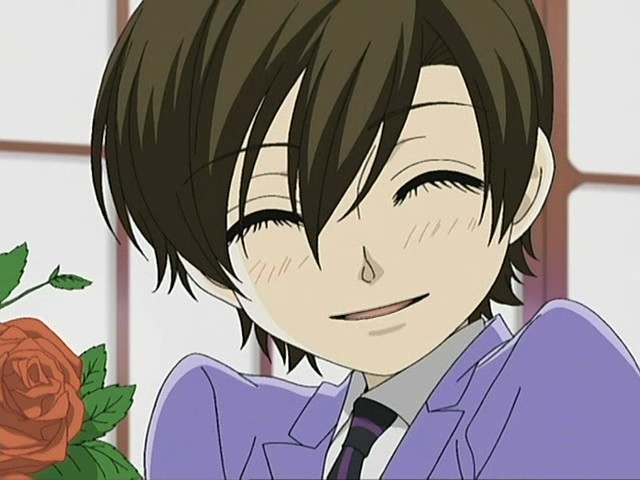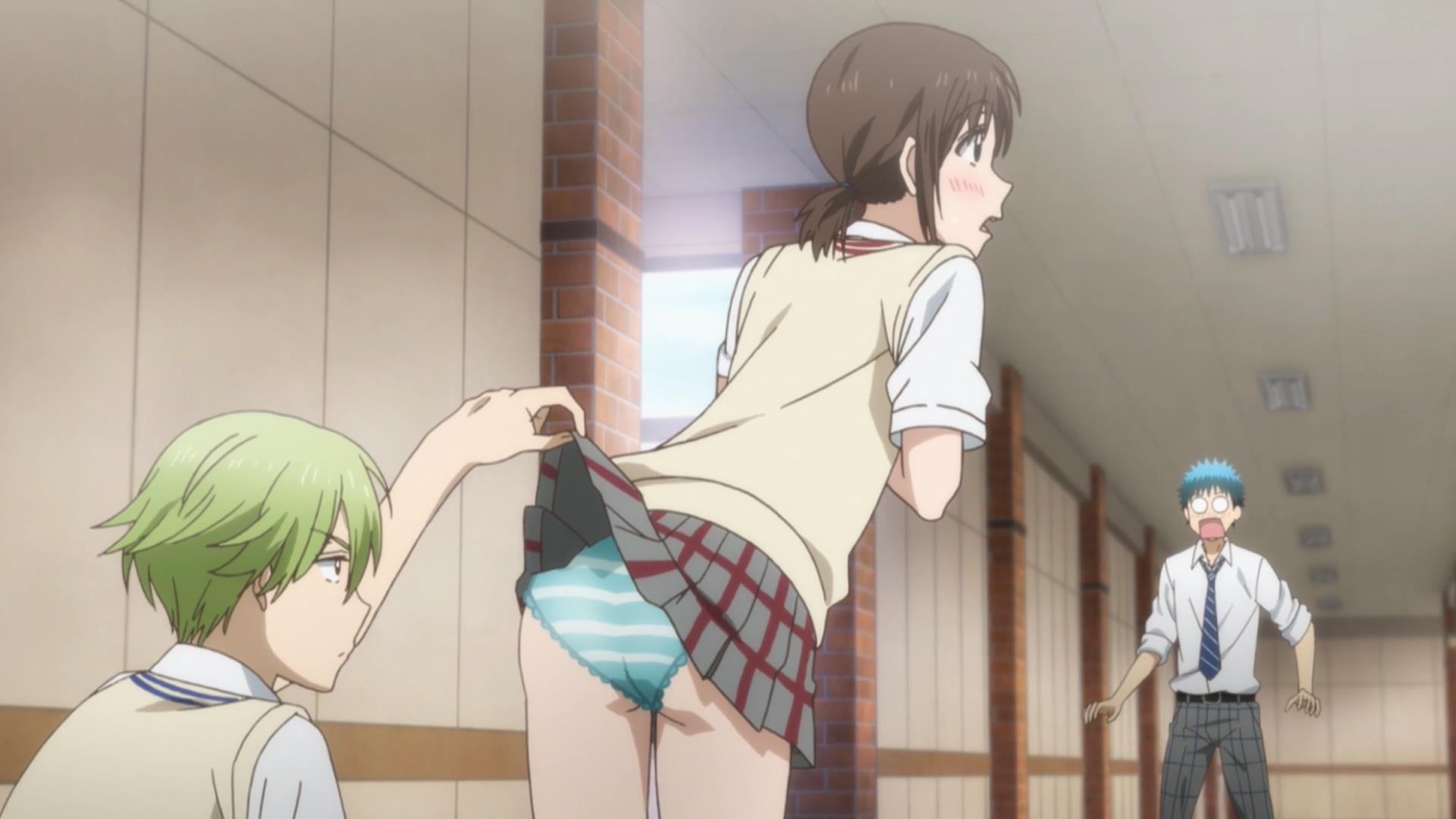
My Teen Romantic Comedy SNAFU, also known as My Youth Romantic Comedy Is Wrong, as I Expected and Oregairu seems to be far away from lending any fictional insight into the plight of middle-aged men. After all, the anime has its focus in the title: teen. SNAFU explores the difficulties of first love, one of anime’s favorite themes. But the story offers many parallels with multiply-divorced middle-aged men’s difficulties. As with my other, longer treatments of narratives, this one will contain spoilers.
Hachiman Hikigaya is forced into the Service Club, a school activity group headed by Yukino Yukinoshita. Yukino, like Hiki, as he’s nicknamed, is an isolated personality. She and Hiki struggle with understanding and accepting emotions and socializing with others. Where Hiki is pessimistic about everyone, Yukino is optimistic about others. Except herself. Enter the bubbly but equally troubled Yui Yuigahama, and you have the setting for a high-school love triangle. Yukino and Yui become friends, and, yes, both girls develop feelings for Hiki. The Service Club attempts to help other students with their various problems, but in the process the trio begins to run against their own problems. To complicate the club further, Yukino and Hiki are forced into a bet by their teacher. Whoever helps the most people can force the other to fulfill a wish. All three share a past connection. One day, Yui’s dog darts into a street as Yukino’s family car approached. Hiki rescues the dog, but in the process, Yukino’s driver hits Hiki, breaking his leg and putting him in the hospital. Both girls feel responsible for the incident despite Hiki brushing them off. It wasn’t Yui’s fault the dog broke his leash. Yukino was just a passenger.
Throughout the story, the trio talks around their burgeoning feelings for each other, friendship and romantic, and talk around their deepest need for something genuine. Hiki’s method of solving problems by making himself into a villain or a sacrifice hurts Yui and Yukino as they grow to care about him. While he claims not to be troubled by his own methods, his body-language–becoming increasingly stooped and dead-eyed–tells a different story. He had been rejected by girls in the past. The experience leaves him distrusting of the messages Yui consciously offers and the ones Yukino unconsciously sends. He believes no girl can have true romantic interest in him. Yui and Yukino soon come to depend on him to the point where Yukino’s older sister describes their love triangle as co-dependent. Gradually, the trio’s work as the Service Club breaks through their isolation and self-imposed walls.
The trio all want the same thing, which drives their behavior as the Service Club: genuine connection. But none of them can express this desire. In a late scene, Hiki breaks down in tears in front of Yui and Yukino as he tries to put his desire into words. In the scene, he only partially succeeds, but it marks a breakthrough in their relationships. Hiki may be a hermit, but he isn’t dense. He understands and reads social signals well. He struggles to believe such signals as genuine when they aim at him. The trio eventually reach a point where they can no longer avoid and talk around their relationships. Yukino wins their bet and charges Hiki to fulfill Yui’s wish. Yui’s wish is to have it all: a relationship with Hiki and to remain best friends with Yukino. But after several days of simulating this, she realizes Hiki doesn’t care for her in that way, and she will also lose Yukino in the process. Yui then supports Hiki and Yukino’s romantic relationship while not completely giving up on her own feelings for him. Hiki admits he struggles putting his feelings into words because love as a single word can’t hold everything he feels. Hiki ends up roundabout confessing his love to Yukino, who later directly tells him she loves him. And so all three end up experiencing genuine difficulty, pain, happiness, and love.
The Plight of Middle-age Men
Across the world, middle-age men, and men in general, have been experiencing an increase in suicide rates. Between 1999 and 2014, suicide rates among men aged 45 to 65 increased by 43% with opioid-related deaths increasing during the same period (Braden, 2017): “Age-adjusted suicide rates increased, as did the percentage of all suicides in which opioids were a contributing cause of death, and this increase was greatest between 1999 and 2009.” A 2016 international suicide study found suicide rates peak in the middle years of life for both men and women. Men’s rates increased from 60 to 94 years old with women’s rates increasing from 60 to 89. In general, global suicide rates are higher for men than for women, but these averages can’t be applied to individual countries. Some countries see differing age brackets for suicides and less data for older age brackets (Sha, 2016). Women have higher rates of suicidal ideation and behavior, but they have lower follow-through and success rates compared to men. Men die 3x more than women with men over 50 being the most common age group (Struszczyk, 2019). Struszczyk states:
Research is also increasingly showing that male suicide is closely linked with conformity to traditional (hegemonic) masculine norms which stem from dominant models of male socialisation in the Western world.
Traditional masculine norms involve a strong, silent guy who handles his own business without the help of others. He’s the breadwinner of the family. Any event that threatens a guy’s traditional identity, such as a divorce or loss of employment links to a higher risk of depression and suicide risk. Men have smaller social networks, in general, than women, which increases the risk of social isolation. Struszczyk (2019) adds:
Masculinities can also restrict help-seeking behaviour, primarily due to the perceived stigma attached to disclosing feelings of distress to peers, family members and health care professionals.
Firearm access contributes to male suicide. In a dated study (from 2016), Siegel and Rothman stated:
We found a strong relationship between higher levels of firearm ownership in a state and higher firearm suicide rates for both genders. Among male individuals, we also found a significant association between higher firearm ownership and higher overall suicide rates, but this relationship did not hold for female individuals.
Our study adds to the consistent finding that, among both genders, increased prevalence of firearms is associated with an increase
in the firearm-specific suicide rate.
Our findings also add to the evidence that higher gun ownership is associated with higher overall suicide rates among male persons.
It’s reasonable that higher firearm availability links to higher rates of firearm suicides. Likewise, increased access to opioids leads to an increase in opioid suicides. The means isn’t as important as the drivers of suicide: loss, grief, drug and alcohol use, social isolation, low self-esteem, long-term mental or physical illness, relationship breakdown, loss of employment, and a general loss of purpose.
Hachiman Hikigaya as a Male Stand-In

While a teen fictional character, Hiki provides a good representation for the troubles of men, especially middle-age men. Hiki tries to embody traditional manhood–strong, independent, solitary, and so on. He struggles to express his emotions. He sacrifices his own feelings and well-being for the sake of others until he just can’t anymore. Many middle-age men act as Hiki does until they simply can’t anymore. While Hiki has the safety net of Yui and Yukino when he hits the ground, many men do not. And this leads them toward suicide and other self-destructive behaviors in an effort to ease the pain they feel. Hiki learns it takes courage to change oneself, to accept the desire for love and for being vulnerable. Hiki, however, has limits as a fictional analog. He’s just starting out in his romance. The peak age of male suicide points toward multiple failures. Many of these men have gone through multiple divorces, alienation from their children, and many other failures on top of the difficulties of communication Hiki exemplifies. Many men who have been hurt by women learn to distrust women, just as Hiki does.
As SNAFU points out with Hachiman Hikigaya, there’s a commonality in all interactions: yourself. In Hiki’s case, he becomes isolated and hurt because his actions led him toward isolation and hurt until he finally finds a safety net with Yui and Yukino. So too with middle-age men; they remain the commonality in their breakdowns and failures. Suicide is seen as a way to end their pain, which of itself is a part of the pattern of behavior that led to that point. Don’t misunderstand. I’m not saying all responsibility for suicide falls on the person. Society has some responsibility with how it makes means of suicide easily available along with amplifying risk factors, such as its failure to teach emotional coping techniques and offering a better, service-focused, sense of purpose. But as Hiki realizes in SNAFU, everyone can control only three things: their thoughts, their emotions, and their actions. Everything else sits outside your control. You can’t control people’s reactions to your actions. Hiki is surprised by Yui and Yukino’s reactions to his actions. He didn’t understand, at first, how by deflecting pain toward himself, he’s hurting Yui and Yukino in the process. So too men who fail to share their pain fail to realize they hurt others by trying to not hurt them.
Hiki shows how men need a social group and how men need romantic relationships. A strong, long-term marriage has been shown in various studies to help men with their mental and physical health and overall longevity (Struszczyk, 2019). There’s a reason why shonen anime have so many romance stories. Guys want a good romance, but they aren’t socialized with the skills necessary for such a relationship. Hiki may be able to read people well, but he doesn’t know how to properly act on that ability. He has to practice at it and fail at it as he learns with Yui and Yukino and with the other characters. He has to learn that relationships aren’t throw-away. And this realization is, perhaps, the most important lesson SNAFU offers society at large. Too often relationships are seen as throw away. There’s always a new, better model. But the suicide rate of middle-age men points to how this isn’t true. Members of the incel and other men’s communities like to point to how women are at fault for this, for throwing relationships away. After all, women initiate the majority of divorces. But we don’t have insight on how well the men were communicating and behaving in those relationships. While women may initiate, the men involved are involved, that is, contributing to the decision in some way. Yui, Yukino, and Hiki, if they were realistic modern characters, would’ve broke off their turbulent relationships. Instead, they stick through it and experience something genuine and grow to be better people.
The Limits of Fiction

The analog I sketch with Hiki and the story of My Youth Romantic Comedy Is Wrong, as I Expected has limits. While Hiki stands in for how men struggle to express their feelings and for their desire for something genuine, he is a fictional teen. Middle-age men face different challenges than young men. Children and wives and other responsibilities change the mathematics. At the core of the suicide problem sits a lack of purpose and an externally defined identity. Hiki, too, lacks purpose and has an externally defined identity. He eventually moves away from these core problems, but reality doesn’t work like fiction does. This seems obvious, but the boundary of reality and narrative isn’t well defined. Your personal narrative about yourself shapes how you view reality. It sets your limits. In many ways, the problem with middle-age male suicide reduces to narrative. They have a narrative focused on their differing risk factors, isolation, and lack of purpose. Non-narrative is still a narrative. If you don’t choose your narrative, society will choose it for you. And there’s the problem many middle-age men face. Our narratives are fictions that set our limits. Some parts of our narratives come from our genetics, our time period, and our cultural limitations. And we must work withing those limitations. I’m a short guy based on my time period and cultural norms. That shortness is a part of my narrative and is a limit that cannot change (I won’t get leg lengthening surgery or other silliness). But not all aspects of our narratives are set by true limitations.
Fiction provides useful reductions. These reductions help us understand one facet of a wider problem or condition. Hiki provides a good analog for the difficulty of communicating and understanding complex feelings and establishing a genuine connection such as a romance. Yukino provides a female illustration of this problem.
I admit that the title of this article is click-bait. SNAFU doesn’t explain the crisis many middle-age men, or men in general, face. That isn’t the purpose of the story. Hiki provides an interesting, if imperfect parallel with the struggles men have. Middle-age men even follow his difficulties with emotional communication, purpose, and the desire for genuineness. It’s not an exact analog. No fictional character can be. But Hiki shows the need for a social support system and the need to take action for oneself. He and the girls show the need to learn how to communicate directly, even when it is difficult or painful.
References
Braden, J. B., Edlund, M. J., & Sullivan, M. D. (2017). Suicide Deaths With Opioid Poisoning in the United States: 1999-2014. American Journal of Public Health, 107(3), 421–426. https://doi-org.oh0164.oplin.org/10.2105/AJPH.2016.303591.
Shah, A., Bhat, R., Zarate-Escudero, S., DeLeo, D., & Erlangsen, A. (2016). Suicide rates in five-year age-bands after the age of 60 years: the international landscape. Aging & Mental Health, 20(2), 131–138. https://doi-org.oh0164.oplin.org/10.1080/13607863.2015.1055552.
Siegel, M., & Rothman, E. F. (2016). Firearm Ownership and Suicide Rates Among US Men and Women, 1981-2013. American Journal of Public Health, 106(7), 1316–1322. https://doi-org.oh0164.oplin.org/10.2105/AJPH.2016.303182.
Struszczyk, S., Galdas, P. M., & Tiffin, P. A. (2019). Men and suicide prevention: a scoping review. Journal of Mental Health, 28(1), 80–88. https://doi-org.oh0164.oplin.org/10.1080/09638237.2017.1370638.




You’ve had no comments here for a decade, until mine. I’d say it’s a pity, since your article is not only cleanly written but also seeks meaning beyond the superficial and thus boasts cited sources for a researched topic, however… perhaps it isn’t a pity but is instead simply the reality of the audience’s chosen level of awareness.
I do hope that you submitted this for a senior thesis. I appreciated it, myself.
Ha! I misread the date of publication, mentally tying it in with the 2014 end of the window of study you cited on suicides.
So, perhaps others will indeed comment, if they aren’t as stupid as I!
Don’t worry about misreading! I’ve been posting an article a week for the past 10 years and will keep at it for the foreseeable future. Not all of my articles will be researched. Research takes a fair bit of time; I usually have more references than what I include here. Those references give me background on the topic, but I don’t include them to keep the reference section under control.
I’m glad you appreciated the article!